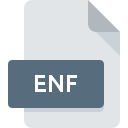.ENF File Extension

EndNote Filter File
| Developer | Clarivate |
| Popularity | |
| Category | Misc Files |
| Format | .ENF |
| Cross Platform | Update Soon |
What is an ENF file?
The .ENF file extension is associated with EndNote, a popular reference management software developed by Clarivate Analytics.
EndNote is widely used by researchers, students, and professionals to organize and manage bibliographic references and citations.
The .ENF file, specifically known as an EndNote Filter File, plays a crucial role in this software by allowing users to import bibliographic data from various online databases into their EndNote libraries.
These files act as filters that translate the data format of external sources into a format that EndNote can process and organize effectively.
More Information.
The initial purpose of the .ENF file was to enable the seamless integration of external bibliographic data into the EndNote system.
When EndNote was first launched, the process of importing references from various online databases was not standardized, leading to inconsistencies in data formatting.
The .ENF files were introduced as a solution to this problem, acting as intermediary filters that could parse and reformat the data according to EndNote’s specifications.
Over time, as the number of online databases increased, the importance of .ENF files grew. Each database often had its own unique data format, making it challenging to import references into EndNote without errors.
The .ENF files were thus created for specific databases, ensuring that the data could be accurately interpreted and organized within EndNote.
This development was crucial for researchers and academics who relied on EndNote to manage their references and citations efficiently.
Origin Of This File.
The .ENF file extension originates from the early versions of EndNote, which was first developed in the late 1980s.
The software was initially created to help researchers manage their references more efficiently, particularly when dealing with large volumes of citations.
As the number of online databases and digital libraries grew, there was a need to import citation data into EndNote from these external sources.
To address this, the EndNote Filter File (.ENF) was developed. This file type was designed to facilitate the accurate translation of data from external databases into the EndNote system, ensuring that the imported references were correctly formatted and could be easily managed within the software.
File Structure Technical Specification.
The .ENF file is a plain text file that contains a series of instructions and mappings used by EndNote to interpret and import data from external sources.
The file is structured in a way that allows it to read data fields from the source file (such as an online database export) and map them to the corresponding fields in the EndNote library.
The structure of an .ENF file typically includes the following components:
- Header Information: This section contains metadata about the filter file itself, such as the name of the database it is designed for, the version number, and any special instructions for using the filter.
- Field Mapping: This is the core of the .ENF file, where the data fields from the external source are mapped to the corresponding fields in EndNote. For example, the author’s name in the source file might be mapped to the “Author” field in EndNote, the title to the “Title” field, and so on.
- Formatting Instructions: In this section, the .ENF file contains instructions on how to handle specific data formatting issues, such as date formats, special characters, and text encoding.
- Conditional Statements: These are used to handle cases where certain data fields might be optional or might vary depending on the source. The .ENF file can include conditional logic to ensure that the data is imported correctly even when certain fields are missing or formatted differently.
How to Convert the File?
The .ENF file is essentially a plain text file, so it does not require conversion in the traditional sense. Users can create or modify .ENF files to suit different data sources or databases.
This can involve editing the field mappings, formatting instructions, and other components within the file to match the data structure of a different source.
To create or modify an .ENF file, users can open it in any text editor (such as Notepad on Windows or TextEdit on macOS) and make the necessary changes.
It’s important to follow the correct syntax and structure to avoid errors during the data import process.
Advantages And Disadvantages.
Advantages:
- Customizability: One of the key advantages of the .ENF file format is its customizability. Users can create or modify .ENF files to suit their specific needs, allowing them to import data from virtually any source with the correct formatting.
- Seamless Integration: .ENF files make it possible to integrate a wide range of external bibliographic data into EndNote, helping users maintain a consistent and organized reference library.
- Efficiency: By automating the process of data mapping and formatting, .ENF files save users significant time and effort, particularly when dealing with large volumes of references.
Disadvantages:
- Complexity: For users who are not familiar with how .ENF files work, creating or editing these files can be complex and error-prone. Incorrectly configured .ENF files can lead to data import errors and inconsistencies.
- Maintenance: As online databases update their data formats, the corresponding .ENF files may need to be updated as well. This can require ongoing maintenance to ensure that the filters continue to function correctly.
- Compatibility Issues: While .ENF files are powerful, they are tied to specific databases. If a user tries to use an .ENF file with a database it was not designed for, the import process may fail or produce incorrect results.
How to Open ENF?
Open In Windows
- EndNote Software: The primary application for opening and using .ENF files is EndNote itself. Users can import these files directly into EndNote by navigating to the “Import” function and selecting the appropriate filter.
- Text Editors: For users who need to view or edit the content of an .ENF file, any text editor, such as Notepad or Notepad++, can be used. Simply right-click on the file, select “Open with,” and choose your preferred text editor.
Open In Linux
- Text Editors: Although EndNote is not natively available on Linux, users can still open and edit .ENF files using text editors like Gedit, Vim, or Nano. These editors allow users to view and modify the file’s content.
- Wine (with EndNote): Advanced users may attempt to run EndNote through Wine, a compatibility layer for running Windows applications on Linux. However, this approach may require additional configuration and is not officially supported.
Open In MAC
- EndNote for Mac: Just like on Windows, the EndNote software on macOS can open and use .ENF files for importing bibliographic data.
- TextEdit: macOS users can open .ENF files in TextEdit, the default text editor, or use other editors like Sublime Text or Atom for more advanced editing.











